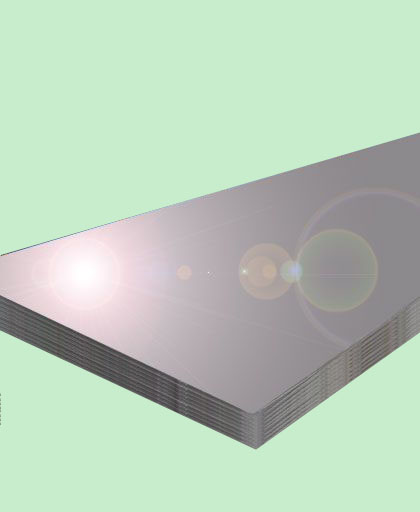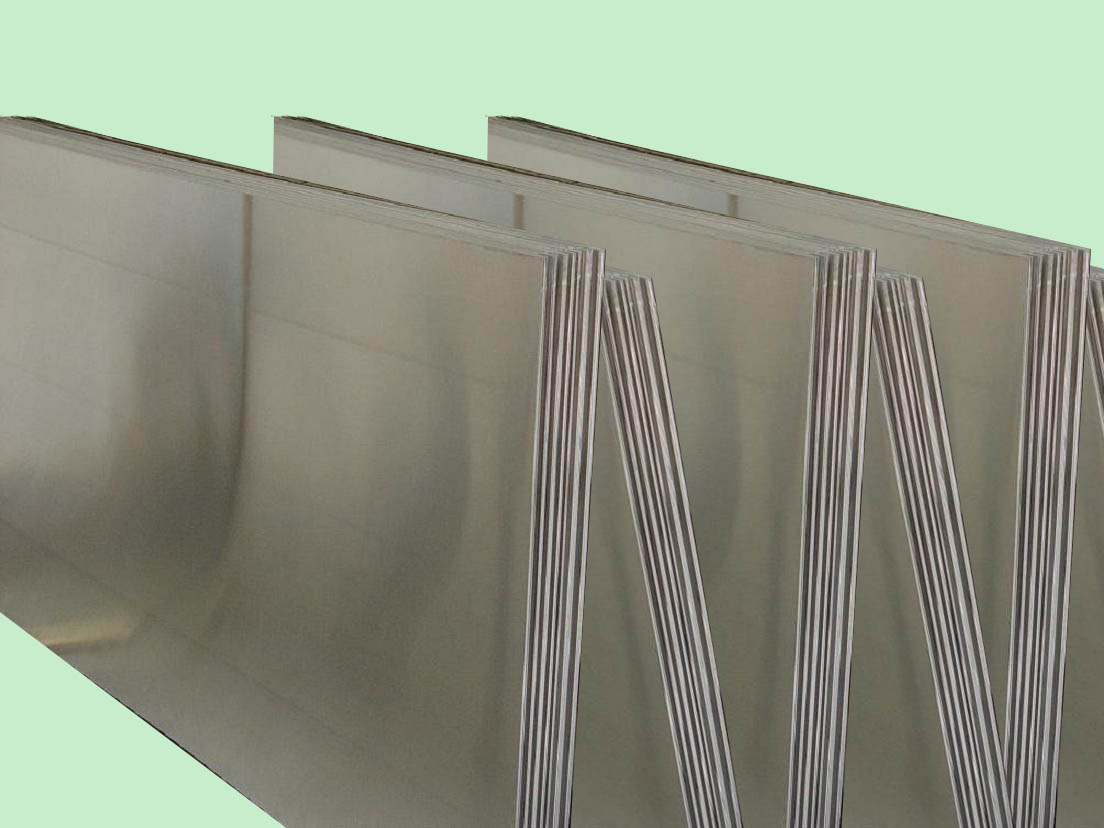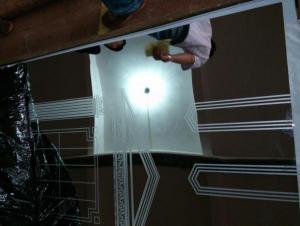Stainless Steel Plate/Sheet
- Loading Port:
- China Main Port
- Payment Terms:
- TT or LC
- Min Order Qty:
- 1 Ton m.t.
- Supply Capability:
- 30000TON PER MONTH m.t./month
OKorder Service Pledge
Quality Product, Order Online Tracking, Timely Delivery
OKorder Financial Service
Credit Rating, Credit Services, Credit Purchasing
You Might Also Like
cold/hot rolled stainless steel plate, sheet
Standard: ASTM/AISI/JIS/EN
Grade: 201,202,304,304L,316, 310, 409,410,430 etc…
Thickness: 0.2 - 200mm
Width: 600, 1000, 1219, 1500mm,
width and length could be customized
Surface finish: No.1, 2B, BA, mirror, hair line, etc...


- Q:Can 111 stainless steel strips be formed into complex shapes?
- Yes, 111 stainless steel strips can be formed into complex shapes. Stainless steel is a highly versatile material that is known for its excellent formability. It can be easily bent, shaped, and manipulated into various complex geometries. The number of strips, in this case being 111, does not limit the ability to form complex shapes. The process of forming stainless steel strips into complex shapes may involve techniques such as bending, rolling, stamping, or welding, depending on the desired final shape. With the right tools, expertise, and techniques, stainless steel strips can be transformed into intricate and complex shapes for various applications in industries such as architecture, automotive, aerospace, and more.
- Q:Can stainless steel strips be used in the petroleum industry?
- Yes, stainless steel strips can be used in the petroleum industry. Stainless steel is known for its high resistance to corrosion, making it an ideal material for applications in the petroleum industry where exposure to harsh chemicals and corrosive environments is common. Stainless steel strips are often used in the construction of storage tanks, pipelines, and other equipment involved in the extraction, refining, and transportation of petroleum products. The durability and strength of stainless steel make it a reliable choice for withstanding the extreme conditions and pressures often encountered in the petroleum industry. Additionally, stainless steel's resistance to temperature fluctuations and its ability to maintain its structural integrity even in high-temperature environments further contribute to its suitability for use in this industry.
- Q:Are stainless steel strips easy to clean?
- Yes, stainless steel strips are easy to clean. Stainless steel is known for its non-porous and smooth surface, which makes it resistant to stains and easy to wipe clean. You can simply use a mild detergent or soap and water to clean stainless steel strips. Additionally, stainless steel is also heat-resistant, so you can use various cleaning methods like steam cleaning or even sterilizing them in boiling water. Overall, stainless steel strips are a low-maintenance material that is durable and easy to keep clean.
- Q:What are the factors affecting the strength of 111 stainless steel strips?
- There are several factors that can affect the strength of 111 stainless steel strips: 1. Composition: The chemical composition of the stainless steel, including the amount of elements such as nickel, chromium, and molybdenum, can greatly impact its strength. Higher levels of these elements generally result in increased strength. 2. Heat treatment: The heat treatment process used during the manufacturing of the stainless steel strips can significantly affect their strength. Heat treatments like annealing, quenching, and tempering can alter the microstructure of the steel, leading to changes in its strength. 3. Cold working: The amount of cold working or deformation applied to the stainless steel strips during processing can impact their strength. Cold working can introduce dislocations and increase the material's strength, but excessive cold working can cause brittleness. 4. Grain size: The grain size of the stainless steel strips can influence their strength. Smaller grain sizes generally result in higher strength due to increased grain boundaries, which hinder dislocation movement. 5. Surface finish: The surface finish of the stainless steel strips can affect their strength, especially in terms of fatigue resistance. Smooth and polished surfaces tend to improve the fatigue strength of the material. 6. Environmental conditions: The environment in which the stainless steel strips are used can affect their strength. Factors such as temperature, humidity, and exposure to corrosive substances can lead to degradation of the material and reduce its strength over time. 7. Manufacturing process: The specific manufacturing process employed to produce the stainless steel strips can also impact their strength. Variables such as rolling techniques, annealing processes, and cold reduction methods can all influence the final strength of the strips. 8. Design considerations: The design of the stainless steel strips, including factors like thickness, width, and the presence of any surface defects or notches, can affect their strength. Proper design considerations should be taken to ensure optimal strength and performance. It is important to note that these factors are interrelated, and changes in one factor can influence the others. Consequently, manufacturers and engineers must carefully consider all these factors to achieve the desired strength and performance of 111 stainless steel strips.
- Q:Can 111 stainless steel strips be coated with protective films?
- Yes, 111 stainless steel strips can be coated with protective films. Protective films are commonly used to prevent scratches, stains, and corrosion on metal surfaces. The coating process involves applying a thin layer of protective film onto the stainless steel strips, which provides an additional barrier and enhances their durability. The films are typically made from materials like polyethylene or polyvinyl chloride and can be transparent or colored. Coating stainless steel strips with protective films helps maintain their pristine appearance and prolong their lifespan in various applications, such as manufacturing, construction, and transportation industries.
- Q:Can stainless steel strips be used in water treatment applications?
- Yes, stainless steel strips can be used in water treatment applications. Stainless steel is highly resistant to corrosion and can withstand exposure to water, making it an ideal material for use in water treatment processes where the strips may come into contact with water or other liquids. Additionally, stainless steel has hygienic properties, is easy to clean, and has excellent longevity and durability, making it a suitable choice for water treatment applications.
- Q:What are the typical hardness values of stainless steel strips?
- The typical hardness values of stainless steel strips can vary depending on the specific grade and type of stainless steel being used. However, stainless steel strips generally have a hardness range between 150 and 250 on the Vickers hardness scale (HV). Some grades of stainless steel may have higher hardness values, reaching up to 300 HV or more, while others may have lower hardness values, closer to the lower end of the range. It is important to note that the hardness of stainless steel strips can also be influenced by factors such as the heat treatment process and the thickness of the strip.
- Q:Can stainless steel strips be formed into coils or rolls?
- Yes, stainless steel strips can be formed into coils or rolls. Stainless steel strips are typically produced in coil form and can easily be wound into a coil or roll shape. This makes them convenient for transportation, storage, and further processing. The process of forming stainless steel strips into coils or rolls involves a combination of bending, coiling, and winding techniques, which allow for the creation of compact and tightly wound stainless steel coils. These coils or rolls can then be used in various applications such as manufacturing, construction, automotive, and many others. The ability to form stainless steel strips into coils or rolls adds to their versatility and makes them a popular choice in many industries.
- Q:What are the different types of slitting for stainless steel strips?
- There are several different types of slitting methods used for stainless steel strips, each with their own advantages and applications. Some of the common types of slitting methods include: 1. Rotary slitting: This is a widely used method that involves the use of circular blades to cut the stainless steel strips. It is suitable for a wide range of thicknesses and can produce high-quality, precise cuts. Rotary slitting is often used for thinner strips. 2. Guillotine slitting: This method involves the use of a guillotine-like blade that moves in a straight line to cut the stainless steel strips. It is generally used for thicker strips and can handle higher volumes of material. Guillotine slitting is known for its speed and efficiency. 3. Crush cutting: Crush cutting is a method that uses two rotating circular blades, with one blade applying pressure to the material while the other blade cuts through it. This method is commonly used for thinner stainless steel strips and is known for its ability to produce clean and straight cuts. 4. Razor slitting: Razor slitting involves the use of a single razor blade to cut the stainless steel strips. This method is often used for thinner gauge materials and can produce very narrow strips. Razor slitting is known for its accuracy and precision. 5. Shear slitting: Shear slitting is a method that uses two blades to cut the stainless steel strips. The blades move past each other in a scissor-like motion to make the cut. This method is commonly used for thicker strips and is known for its ability to handle high volumes of material. Each of these slitting methods has its own advantages and is suitable for different applications. The choice of slitting method depends on factors such as the thickness of the stainless steel strips, the required accuracy of the cuts, and the desired production volume.
- Q:Can 111 stainless steel strips be perforated for filtration applications?
- Indeed, it is possible to perforate 111 stainless steel strips for filtration purposes. Perforation of stainless steel strips enables the formation of delicate apertures or slits, which are crucial for filtration objectives. The dimensions and configuration of the perforations can be tailored to meet specific filtration criteria. Stainless steel is frequently favored for filtration applications owing to its robustness, resistance to corrosion, and capacity to endure elevated temperatures. Consequently, employing 111 stainless steel strips for perforation can present an efficient remedy for diverse filtration demands.
Our company can provide stainless steel horizontal shear, slitting, CNC plasma cutting, sanding, 8K, oil mill, anti-fingerprint, embossed, red flowers, spare parts and other supporting services, and provide customized integration services to meet all customer needs.we have more than 10 years history, and have long maintained good cooperative relations with well-known domestic partners.
1. Manufacturer Overview |
|
|---|---|
| Location | Wuxi,China |
| Year Established | 2000 |
| Annual Output Value | Above US$16 Million |
| Main Markets | Chinese, Europe,South Africa |
| Company Certifications | ISO9001:2000; |
2. Manufacturer Certificates |
|
|---|---|
| a) Certification Name | |
| Range | |
| Reference | |
| Validity Period | |
3. Manufacturer Capability |
|
|---|---|
| a)Trade Capacity | |
| Nearest Port | Shanghai |
| Export Percentage | 30% |
| No.of Employees in Trade Department | 50 People |
| Language Spoken: | English;Chinese |
| b)Factory Information | |
| Factory Size: | Above 80,000 square meters |
| No. of Production Lines | Above 7 |
| Contract Manufacturing | OEM Service Offered;Design Service Offered |
| Product Price Range | Average |
Send your message to us
Stainless Steel Plate/Sheet
- Loading Port:
- China Main Port
- Payment Terms:
- TT or LC
- Min Order Qty:
- 1 Ton m.t.
- Supply Capability:
- 30000TON PER MONTH m.t./month
OKorder Service Pledge
Quality Product, Order Online Tracking, Timely Delivery
OKorder Financial Service
Credit Rating, Credit Services, Credit Purchasing
Similar products
New products
Hot products
Hot Searches
Related keywords






























